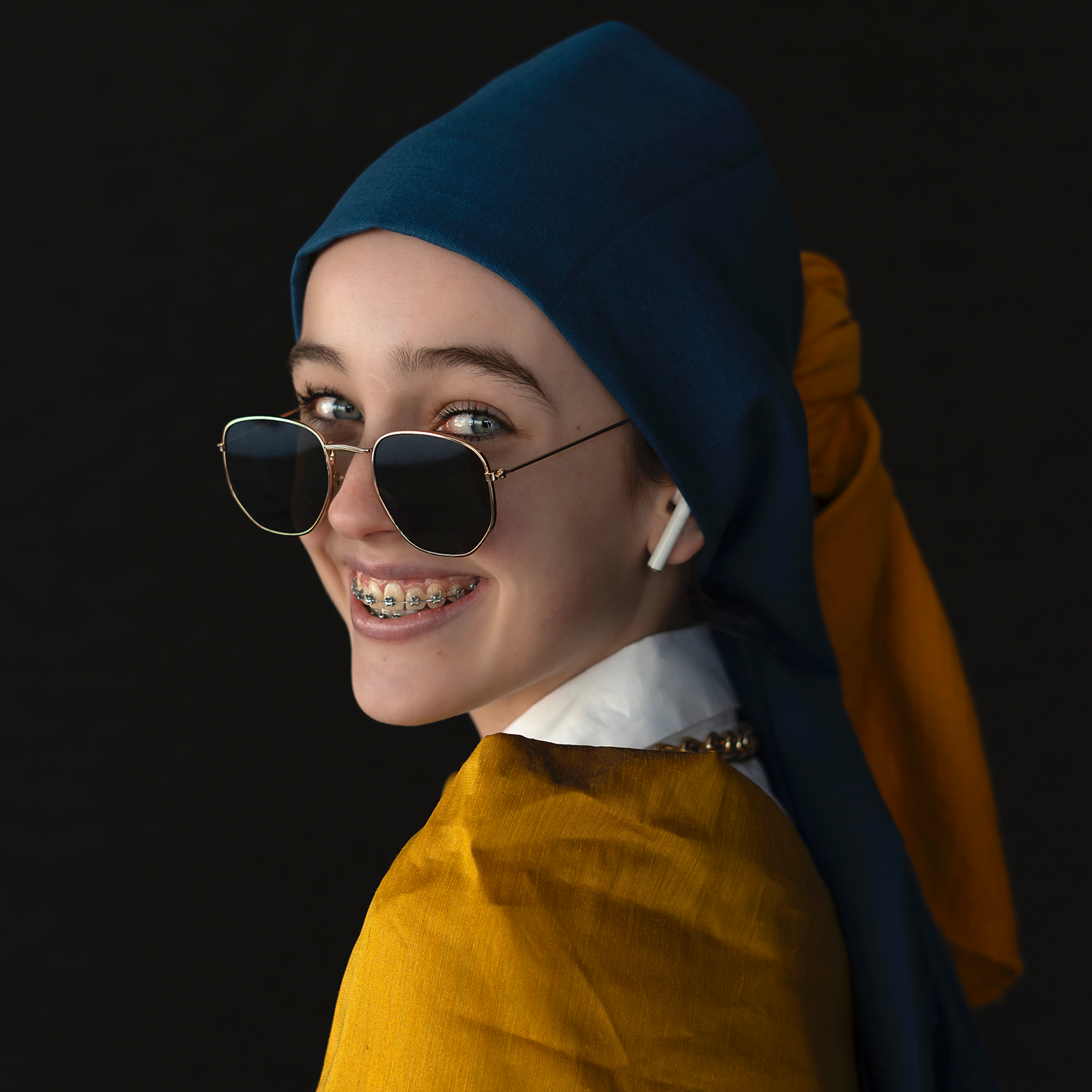Can’t take my eyes off you
Neuroscience research into the 'Girl with a Pearl Earring'

Once you start looking at Vermeer's Girl with a Pearl Earring, you simply can't take your eyes off her. And you're not the only one – she enchants hundreds of thousands of visitors every year. What exactly makes her so special?
We investigated this with the help of brain scientists. We wanted to know what the difference is between looking at a real painting in the Mauritshuis and looking at a reproduction. What exactly happens in the brain when you look at Girl with a Pearl Earring? The results are pretty astonishing.
Curious about how we conducted this research and what the results are? Keep on scrolling!
A 10x stronger emotional response at the museum
Looking at real paintings in the Mauritshuis produces an emotional response in the brain that is 10 times (!) as strong as the response produced by looking at reproductions. Girl with a Pearl Earring stood out in this study for the following reasons:
- The Girl keeps you trapped in a Sustained Attentional Loop
You continue looking at Girl with a Pearl Earring longer than any other painting we examined. The painting not only captures your gaze, but then holds your attention in a Sustained Attentional Loop. First, you start by looking into her eyes, then at her mouth, and then the pearl. And then it happens again — you just can’t look away.
- The Girl highly stimulates the precuneus in your brain
There is more brain activity when looking at Girl with a Pearl Earring than the other paintings we examined, especially in the precuneus. The precuneus is mainly involved in psychological functions like consciousness, self-reflection and personal life experiences.
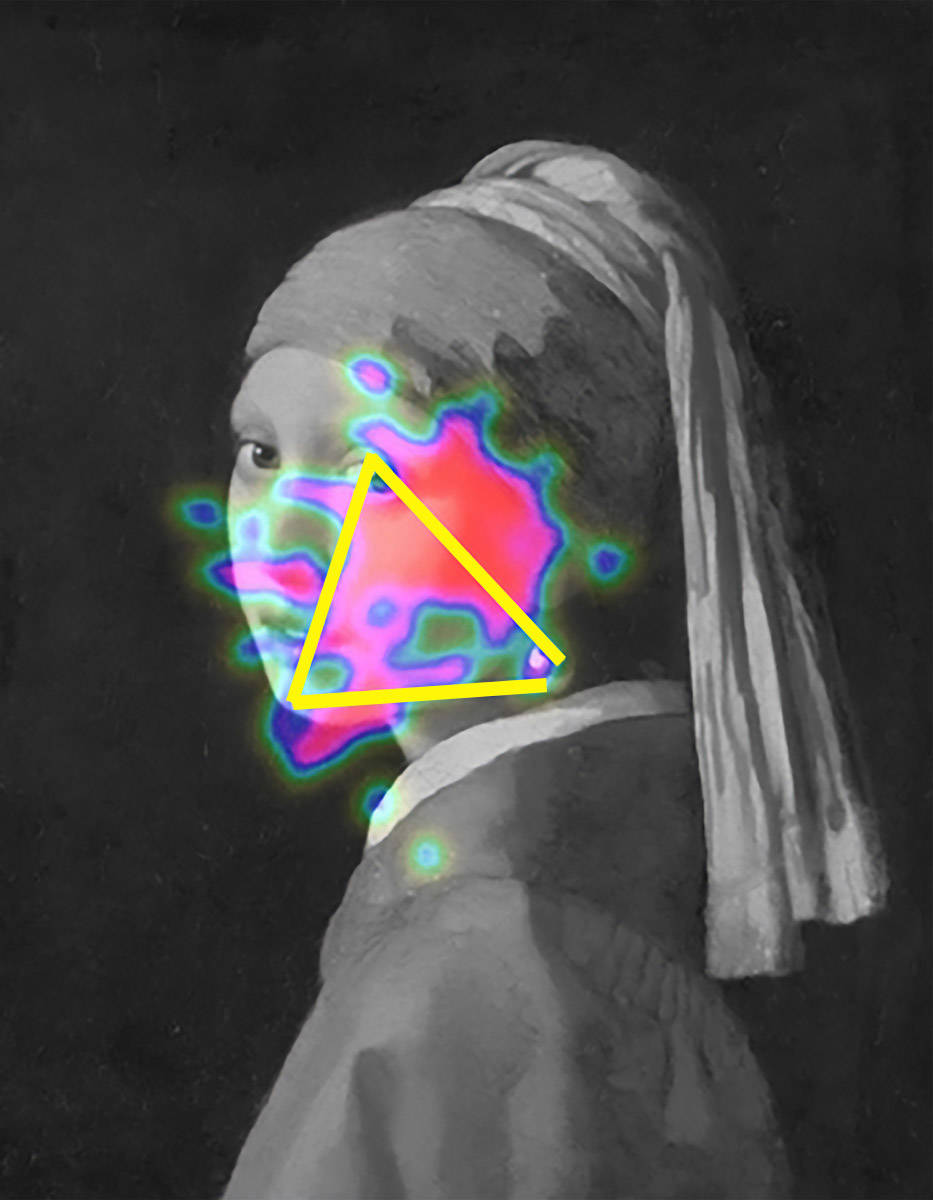

Can’t take my eyes off you
You keep looking at Girl with a Pearl Earring
How does looking at art work exactly?
What happens in your brain when you look at art? To investigate this, we performed an EEG measurement on test subjects, to monitor their brain waves. Electrodes were placed on the heads of participants to measure brain activity. Then they looked at paintings in the Mauritshuis and reproductions of the same images.
We used eye tracking to keep track of what they were looking at. Afterwards, test subjects looked at reproductions of the same paintings in an MRI scanner at the University of Amsterdam.
What did we find? Looking at art is good for your brain. Independent brain scientist Erik Scherder explains what happens in your brain when you look at art.
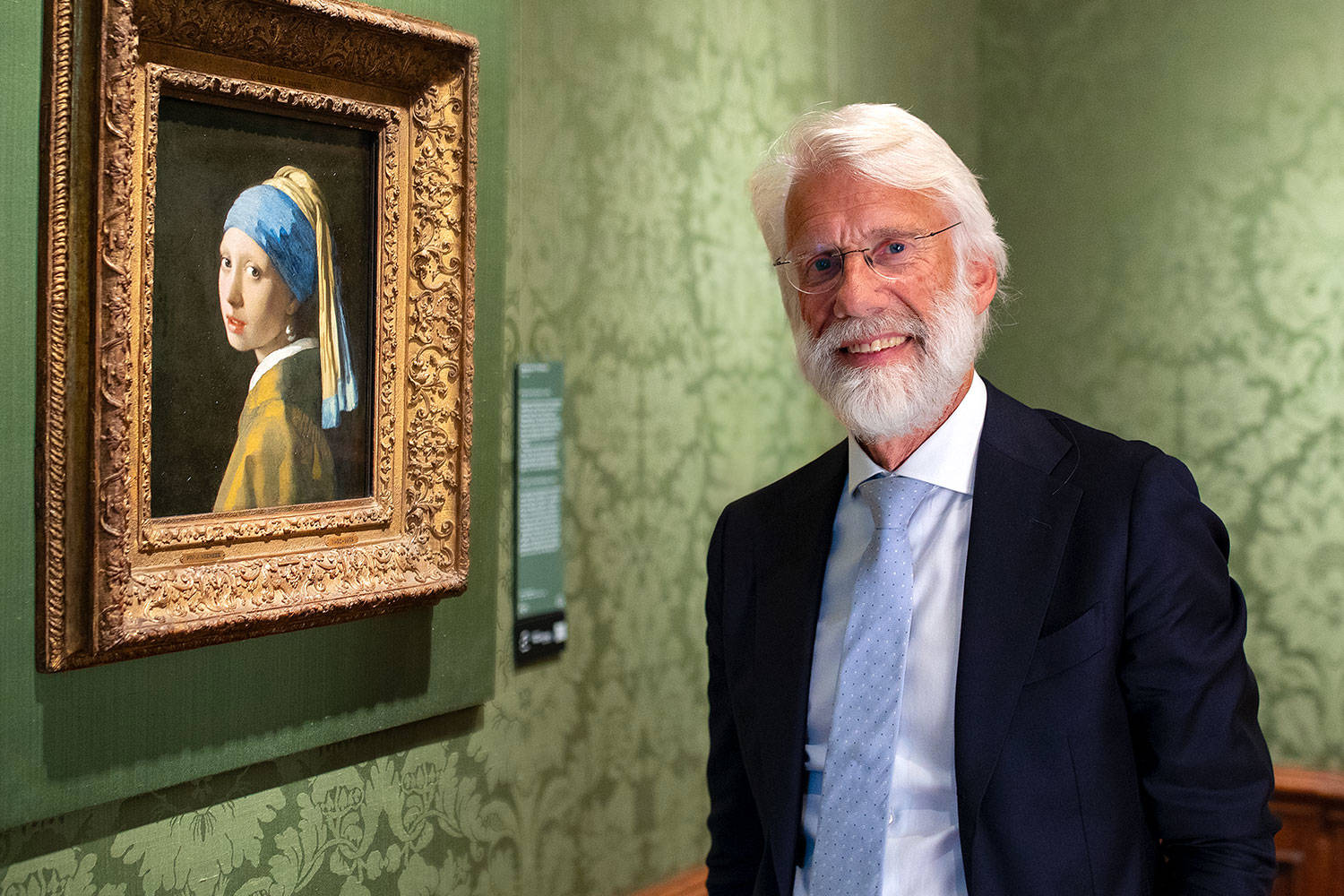
A happy brain
Brain scientist Erik Scherder explains what happens in your brain when you look at art.
What's the secret of the 'Girl with a Pearl Earring'?
Neuroscientist Martijn den Otter, from Neurofactor, investigated this together with research agency Neurensics.
Why can't you take your eyes off her, exactly? People are naturally focused on faces. When you look at someone's face - even if it's someone in a photo or painting - your brain automatically tries to decipher that person's emotion. That's how you determine whether someone is 'safe' or not.
Johannes Vermeer exploits this mechanism and does something clever with it. He creates a Sustained Attentional Loop: his Girl with a Pearl Earring not only catches your gaze, but also traps your attention in a loop.
Normally, you automatically look at someone's eyes and mouth. They give you the most information about emotions. When you look at the Girl with a Pearl Earring, something extra happens: you first look at her eyes and mouth and then immediately at her pearl. You return to her eyes and mouth, and then immediately look at the pearl again. And you don't do that just once, not twice, but several times in a row.
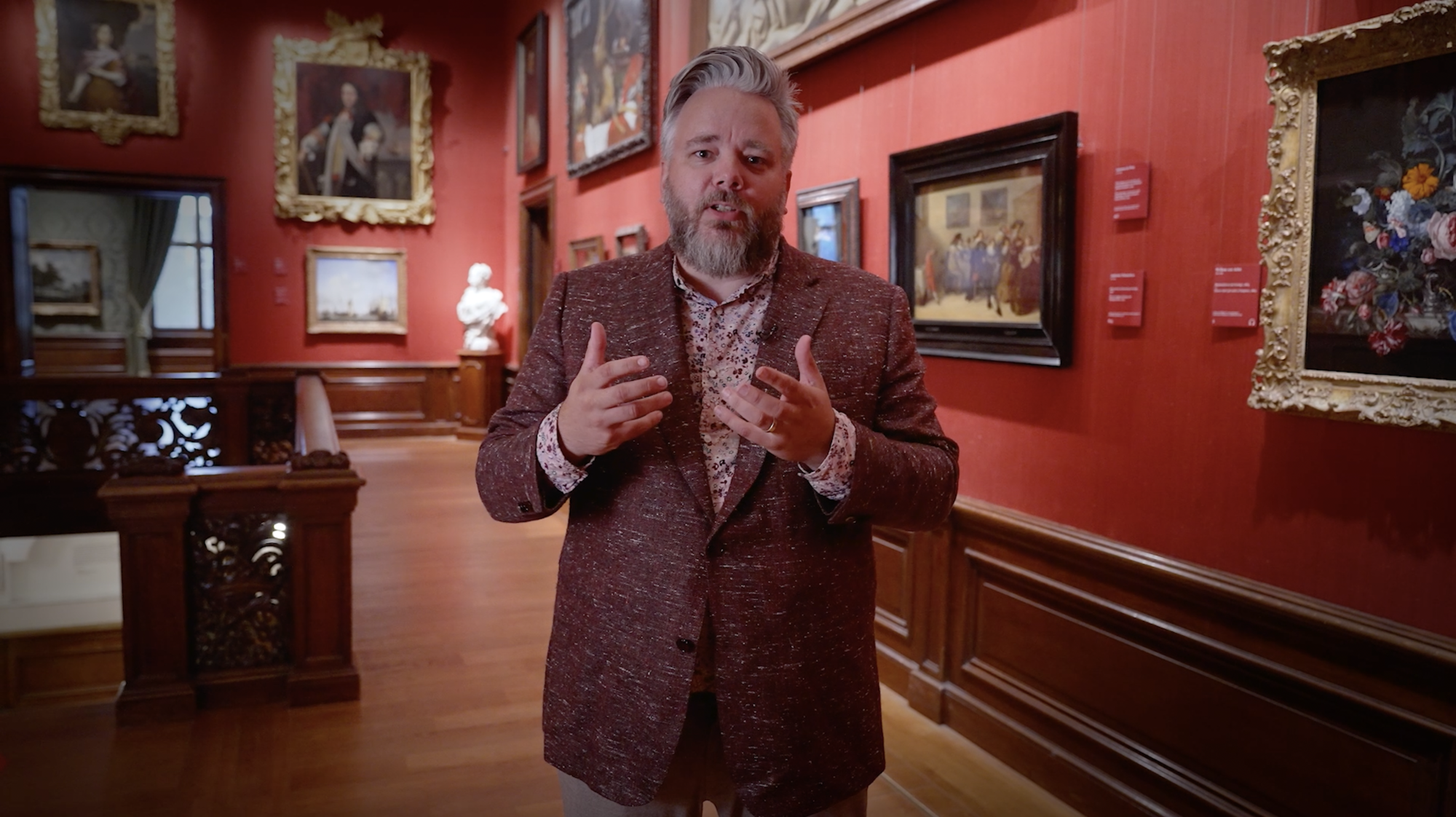
Sustained Attentional Loop
Neuroscientist Martijn den Otter explains the secret of the 'Girl with a Pearl Earring'.
Why did we investigate this?
Do you have a version of Girl with a Pearl Earring at home? You are definitely not alone, you see her everywhere! We started wondering about the added value of looking at the real painting, when there are so many reproductions around you all the time.
The value of this research
Technical art historian Liselore Tissen is doing her PhD on the significance of replicas for field of Art History. She is involved in this research as an independent scientist.
This particular research really centralizes the visitor. And by doing that, you see that it is not just about the artwork, but also about the space, the light, the frame, etc. This proves that a museum visit is vital for the experience of art.
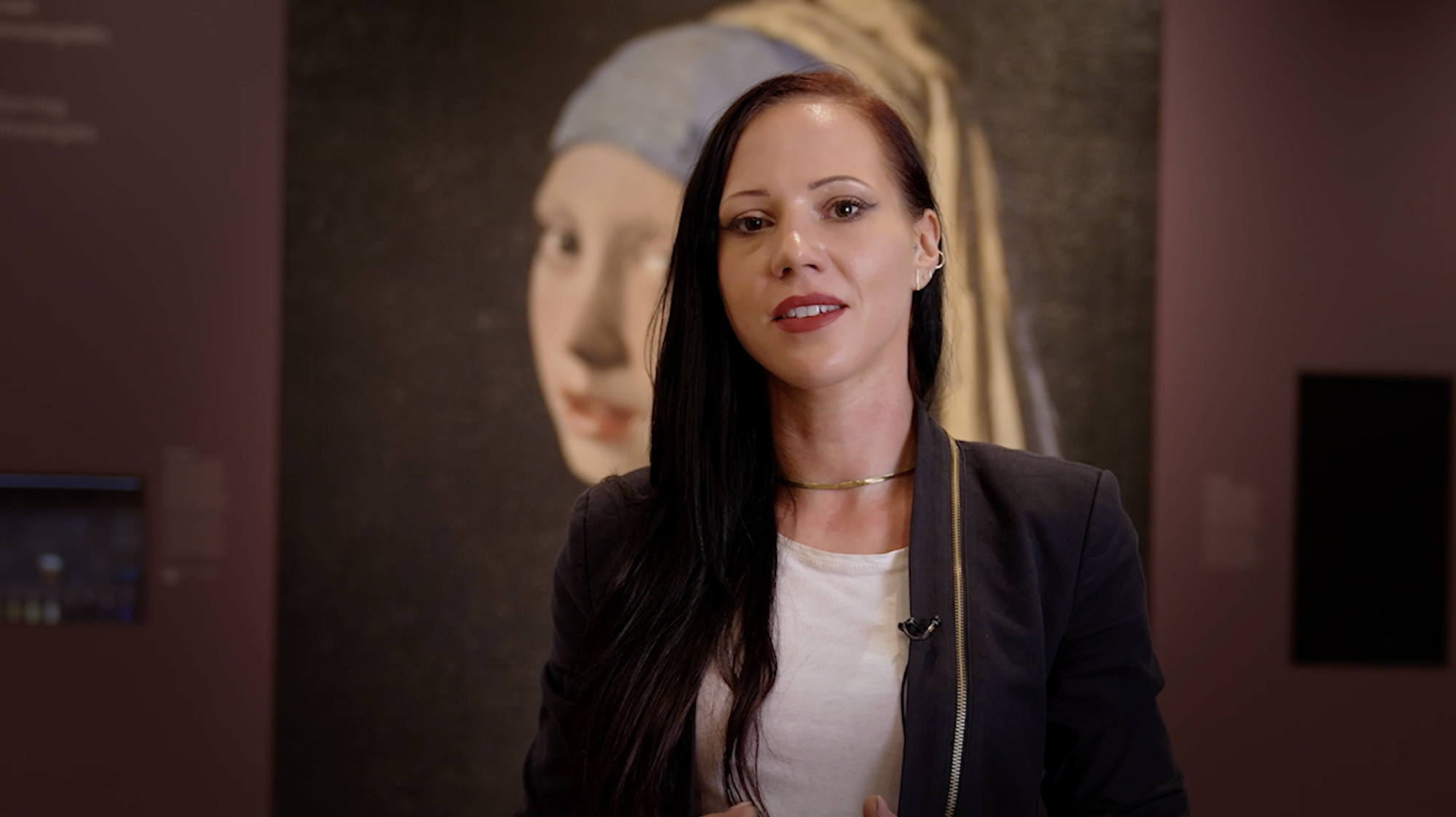
The results
Why exactly are the results of this research so important? Technical art historian Liselore Tissen explains.
Want to learn more?
Would you like to read the full report? For example, because you are studying art history, are working in the field, or simply because the subject fascinates you? Then send us a quick email via the button below or email [email protected].
Are you a journalist and would you like to stay informed about our programming and research? Then sign up for the press mailing list here.
Experience it yourself
Come visit the Mauritshuis in The Hague and discover the magnetic appeal of Girl with a Pearl Earring.

